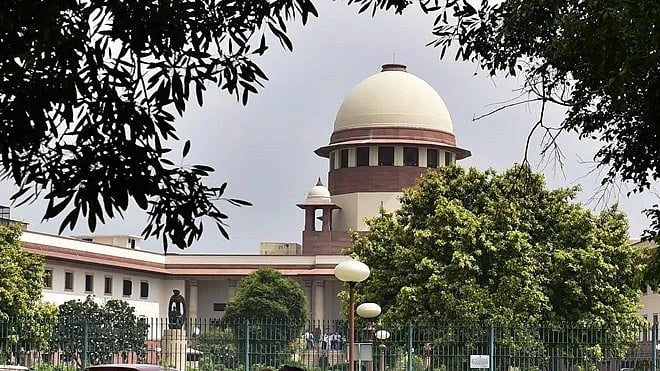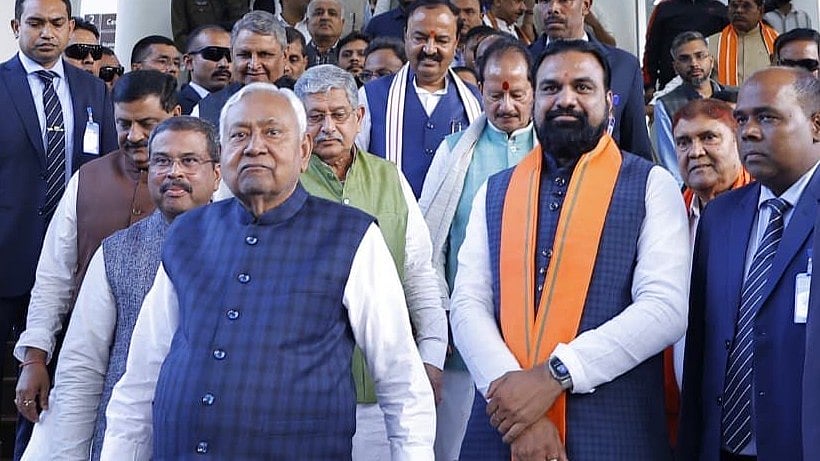After contracting as much as 15.8 per cent in the April to September period of FY ’21 – a 24.4 per cent fall in the first quarter and a 7.3 per cent slide in the July to September quarter (revised data) – due to the Covid-19 pandemic and national and regional lockdowns, economists had predicted that the GDP growth would see a marginal expansion in the October-to-December quarter. Therefore, after two consecutive quarters of a waterfall-like slide, the data for the third quarter released by the National Statistical Organisation (NSO) on February 27 did not come as a surprise, as gross domestic product for Q3 returned to year-on-year growth, although of a small magnitude and on a low base, thus putting an end to India’s technical recession.
While the GDP was expected to return to positive territory, there was uncertainty about the extent of steady recovery, which had begun in the last quarter. According to average estimates of 10 economists polled by Bloomberg, the GDP was expected to grow 0.5 per cent in the third quarter. State Bank of India’s chief economist Soumya Kanti Ghosh had projected the GDP growth to be around 0.3 per cent, based on the bank’s ‘SBI Nowcasting Model’. The rating agency ICRA had estimated a rise of 0.7 per cent, while DBS Bank predicted the third quarterly growth to be at 1.7 per cent. The NSO data shows India’s Q3 GDP growth rate was in line with expectations: a marginal rise at 0.4 per cent, reaffirming that the economy has managed to exit the pandemic-led slump by 2020-end.
Updated forecast
However, the GDP for the current financial year is expected to contract by a slightly bigger margin of 8 per cent, according to the government’s official updated forecast. The first advanced estimates had forecast a 7.7 per cent contraction. This means a deeper decline in full-year GDP, implying a 1.1 per cent contraction in the January-to-March quarter. The note of caution is that all projections are conditional on the pace of virus infections remaining in check.
The latest figures for the third quarter also show that the manufacturing sector, which had registered a 1.5 per cent decline in the second quarter, grew by 1.6 per cent in Q3. As expected, the agriculture sector, which stood out in the previous two quarters, continued its growth run, to register a 3.9 per cent expansion. Agriculture was the rare bright spot that had expanded 3 per cent each in the previous two quarters as well.
However, private consumption expenditure, which is a measure of the crucial consumer demand, continued to contract, falling by 2.3 per cent in Q3, though the extent of contraction reduced from the second quarter when it had shrunk 11 per cent. Government spending, on the other hand, also fell in the latest quarter. While the economy has managed to snap out of recession and the government feels the positive growth rate was a sign of revival to pre-pandemic times, the economy, the government admitted, is still not out of the woods. This calls for, according to experts, continued fiscal and monetary measures to support the fragile economy. So, what are the key takeaways from the latest GDP data?
Mixed bag
The NSO data is a mix of many positives and some negatives. Festival-led consumption and pent-up demand should have helped the economy expand higher than 0.4 per cent. But this has not happened and consumer confidence continues to be low. The revised growth estimates for the full fiscal at minus 8 per cent, against the RBI’s estimates of minus 7.5 per cent, also suggests slower-than-expected growth in manufacturing and services sectors.
While the manufacturing sector has revived and expanded by 1.6 per cent from the same period a year ago, after contracting 1.5 per cent in the earlier quarter and agriculture continues on its growth trajectory, financial and real estate sectors have also seen a growth of 6.6 per cent; in the last quarter. This category had seen a dismal performance, contracting 9.5 per cent.
Consumer spending, a key indicator of domestic demand in a consumption-driven economy, continued to fall, although the pace of decline has slowed. A 2.4 decline in consumer spending in a crucial festive quarter suggests that a rebound in private demand is still some time away and may impact the overall economic scenario in the near-to-medium term.
Similarly, government spending continued to decline at 1.1 per cent, although the pace of decline has slowed. Gross fixed capital formation, a measure of investment demand, expanded 2.6 per cent, which is a sharp recovery after a 6.7 per cent and 46 per cent contraction in the second and first quarters of the current fiscal, respectively.
Green shoots
Although a bit lower than expectations, the fact that the economy did move into the green in Q3, indicates that the measures taken by the government to contain the spread of the virus have had a positive impact on growth. Going ahead, some economists see the continuation of a K-shaped recovery, as against the government’s claim of a V-shaped recovery, with some sectors growing faster than others.
But there is also a cause for concern in view of the virus raising its ugly head once again in some states, causing a spike in daily cases over the past two weeks. While some experts see the economy reaching the pre-pandemic output levels by the end of 2021, others are not so optimistic and see a full recovery not before mid-2022. This is because while big businesses have almost returned to their normal potential, the real pain is in the informal sector – the SMEs – where millions of jobs have been lost and production levels are yet to pick up.
So, does GDP growth in Q3 call for celebration? Not really, but one should be happy about the many positives. The Indian economy is a large and complex economy, with a sizable unorganised sector. Therefore, the revision of GDP numbers is not a rare occurrence. Q1 and Q2 GDP numbers of the current fiscal have been revised – one up, the other down – and it is possible that the Q3 numbers could also see an upward or downward revision because, as the NSO has said, “Covid-19 pandemic has had an impact on the economic activities as well as data collection mechanism…Estimates are, therefore, likely to undergo sharp revisions for the aforesaid cause in due course, as per the release calendar.” So, the picture is far from unambiguous.
The author is an independent senior journalist.


 (1).jpg)






